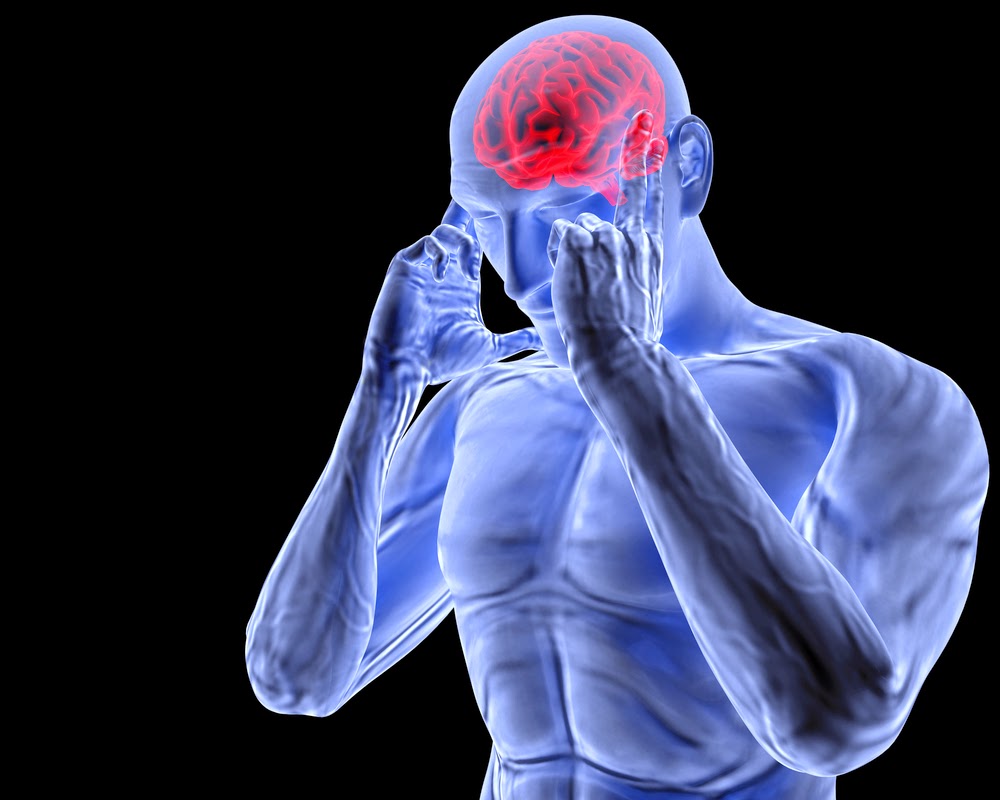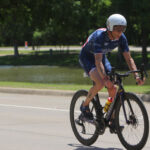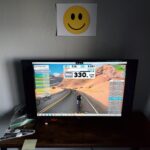Ski racing is one of the most difficult sports to master because it’s one of the few that you can’t do locally all year round. Think of sports like baseball, tennis, swimming, the list goes on. You could conceivably practice these sports literally every day, thus giving you the reps you need far sooner compared to ski racing. The simple reality of ski racing is that you can only get a finite number of days on snow, free skiing or in gates. The rest of the time you likely spend doing conditioning in preparation for getting back on snow.
 Imagine if there was a magical tool you could use during those many weeks and months away from snow to get more reps without actually having to put on your boots and click into your skis. Well, there actually is such a tool and it’s not magical at all; it’s called mental imagery (or visualization).
Imagine if there was a magical tool you could use during those many weeks and months away from snow to get more reps without actually having to put on your boots and click into your skis. Well, there actually is such a tool and it’s not magical at all; it’s called mental imagery (or visualization).
You may scoff at the idea that picturing yoruself skiing in my mind’s eye can have any benefit to your ski racing. Yet, I can assure you, from both personal ski racing experience back in the day (I hold imagery responsible for making a huge jump in my results and points when I was 18 years old) and my decades of working with World Cuppers, top collegiate skiers, and some of the rising stars in our sport, that it really works. And, heck, since you’re just hanging out at home so much now, what’s the harm in seeing for yourself whether it works?
World Cuppers Use Mental Imagery
One of the most indelible memories I took away from the 2022 Winter Olympics was from the start area of the alpine events. Time after time, we saw the best ski racers in the world with their head down and eyes closed, moving their hands and their bodies. Whether it was Mikaela, Lucas, Henrik, Sofia, Paula, Aleksander, the list goes on, they were all doing it. What were they doing? Well, mental imagery, of course. They were using the power of seeing and feeling themselves race before they actually raced to help them get as prepared as they could be mentally and physically to ski their fastest in the biggest races of their lives.
Aleksander, the list goes on, they were all doing it. What were they doing? Well, mental imagery, of course. They were using the power of seeing and feeling themselves race before they actually raced to help them get as prepared as they could be mentally and physically to ski their fastest in the biggest races of their lives.
But don’t be fooled into thinking that these remarkable ski racers just do mental imagery before races. In fact, they use it all year round, both on and off the hill. Why? Because they know they can benefit in so many ways—mentally, physically, technically, tactically—from taking thousands more training and race runs without having to get on snow. Simply by reproducing how they want to ski in their mind’s eye.
Keys to Quality Mental Imagery
So, with last season concluded and now in your rear-view mirror and next season just underway, the prep period is the ideal time to commit to a mental imagery program and make big gains in your training and race preparations as you look to next winter.
But, just like physical conditioning, mental imagery won’t work if you only do it every once in a while or inconsistently. You have to approach your imagery the same way you approach your conditioning; you should have a structured imagery program that you do consistently. You can think of mental imagery as strength training for the mind; you want to strengthen your mental “muscles” including motivation, confidence, intensity, focus, and emotions. And mental imagery is the most powerful mental “exercise” you can do to get your mind as strong as your body.
There are five factors that impact the quality of mental imagery: perspective, control, multiple senses, speed, and total reproduction. You can develop each of these areas so you can get the most out of your imagery.
Imagery perspective. Imagery perspective refers to where the “imagery camera” is when you see yourself ski. The internal perspective involves seeing yourself from inside your body looking out, as if you were actually skiing. The external perspective involves seeing yourself from outside your body like on video. Research indicates that one perspective is not better than the other. Most people have a dominant perspective with which they’re most comfortable. Use the perspective that’s most natural for you and then experiment with the other perspective to see if it helps you in a different way.
Control. Have you ever been doing imagery and you keep making mistakes, for example, you keep getting in the back seat or hipping out? This problem relates to imagery control, which is how well you’re able to imagine what you want to imagine. It’s not uncommon for racers to ski poorly in their imagery and it often reflects a fundamental lack of confidence in your skiing (when I started using imagery as a youth, I couldn’t go three gates in my head without hooking a tip!). If mistakes occur in your imagery, you shouldn’t just let them go by. If you do, you’ll further ingrain the negative image and feelings which will hurt your skiing. Instead, when you make mistakes in your imagery, immediately rewind the “imagery video” and edit it and rerun the imagery video until you get it right.
Multiple senses. Good imagery is more than just visual, that’s why I don’t like to call it visualization. The best imagery involves the multi-sensory reproduction of the actual ski racing experience. You should duplicate the sights, sounds, physical sensations, thoughts, and emotions that you would experience in an actual race.
Feel your skiing. The most powerful part of race imagery is feeling it in your body. That’s how you really ingrain new technical and mental habits. A useful way to increase the feeling in your race imagery is to combine imagined and real sensations. Imagine yourself skiing and move your body with the imagined skiing, just like the Olympians in Pyeongchang.
Speed. The ability to adjust the speed of your imagery will enable you to use imagery to improve different aspects of your skiing. “Slow-mo” imagery is effective for focusing on technique. When you first start to work on technique in your imagery, slow the imagery video down, frame by frame, if necessary, to see yourself executing the skill correctly. “Fast-forward” imagery is beneficial because it prevents you from overthinking and helps you learn to trust your body to do what you’ve trained it to do. “Real-time imagery can be used as races approach to prepare your mind and body to race at a realistic speed.
Total reproduction: For you to get the most out of your imagery, you want to do everything you can to create a total reproduction of your actual skiing experience. Everything that you think and feel (both physical and emotional feelings), every sense you experience, you want to reproduce in your imagery. In other words, you want to make your imagery as real as possible.
Be Realistic in Your Imagery
Imagine realistic conditions. Imagine yourself performing under realistic conditions, in other words, always do imagery under those conditions in which you normally train and compete. That is, if you’re seeded farther back and the courses are usually chewed up, imagine yourself on rough courses. Only imagine yourself racing under ideal conditions if you typically start in the early seeds and can expect “hero” snow.
Imagine realistic skiing. If you’re a junior racer, don’t imagine yourself skiing like a World Cupper. Instead, imagine yourself skiing the way you normally ski, but incorporate positive changes into your skiing that you are working on.
Develop An Off-Snow Imagery Program
The key to effective mental imagery is consistency. You wouldn’t expect to get stronger by lifting weights once every few weeks. You wouldn’t expect to get better technically by skiing once in a while. The same holds true for mental imagery. The only way to gain the benefits of mental imagery is to use it frequently.
Set imagery goals. Set specific goals for what areas you want to work on in the off season. For example, you might focus on some technical change, being more relaxed and focused, or just going really fast and finishing.
Climb imagery ladder. Create a ladder of training and races scenarios in which you will be skiing in the upcoming season. The ladder should start with training on easy hills and progress to more demanding training situations, timed training runs, less important races, and increase through more important races up to the most important race in which you’ll compete next year.
Then, begin your imagery on the lowest level of the imagery ladder. Stay at that rung until you reach your imagery goal. When that is achieved, stay at that step for several imagery sessions to really reinforce and ingrain the positive images, thoughts, and feelings. Then work your way up the ladder until you’re skiing the way you want in your imagery at the very top of the imagery ladder in the biggest race of the season.
Training- and race-specific imagery. Select training and race situations that are appropriate for your level of development. In other words, if you’re a U16, don’t imagine yourself racing in a World Cup at Wengen. Imagine yourself racing on a specific hill in a particular event in a specific race with a precise start number, for example, a Eastern Cup slalom at Stowe running 47th. Then select a different hill, event, and race for each imagery session, thus reaching their imagery goals on different hills and in varying events and conditions.
Imagery sessions. Imagery sessions should be done 3-4 times per week. Set aside a specific time of the day when you’ll do your imagery (just like you do for your physical training) and program alerts in your smartphone as reminders. Find a quiet, comfortable place where you won’t be disturbed. Each session should last about 10 minutes.
Imagery log. One difficulty with imagery is that, unlike physical training, the results aren’t tangible. An effective way to make imagery more concrete is to keep an imagery log. A log should record key aspects of every imagery session including the quality of the imagined performance, any thoughts and feelings that occur (positive or negative), problems that emerged, and what you need to work on for the next session. An imagery log enables you to see progress in your imagery, thereby making it more rewarding and motivating you to continue to use it. I include an imagery log in my mental imagery workbook that you can download and print out.
Accept the Challenge
So, here’s the deal. I can’t guarantee that you’ll be winning World Cups in the future by committing to a consistent off-snow imagery program or that your efforts will result in a quantum leap in your ski racing like it did for me when I was a racer so many years ago. But I will say that if you commit to a serious mental imagery program, there’s a darned good chance that you will be much better prepared mentally than you were this past winter. And if you combine the imagery program with an intensive physical conditioning regimen and quality on-snow training, then I can say with confidence that when you slide into the starting gate at your first race next winter, you’ll be able to say, “I’m as prepared as I can be to ski fast and achieve my goals.”
I have three free downloadable mp3 audio files that guide you through relaxation and race imagery scenarios for training, SL/GS and SG/DH. I also have a free mental imagery workbook that you can download and print out to help you create a structured imagery program.







